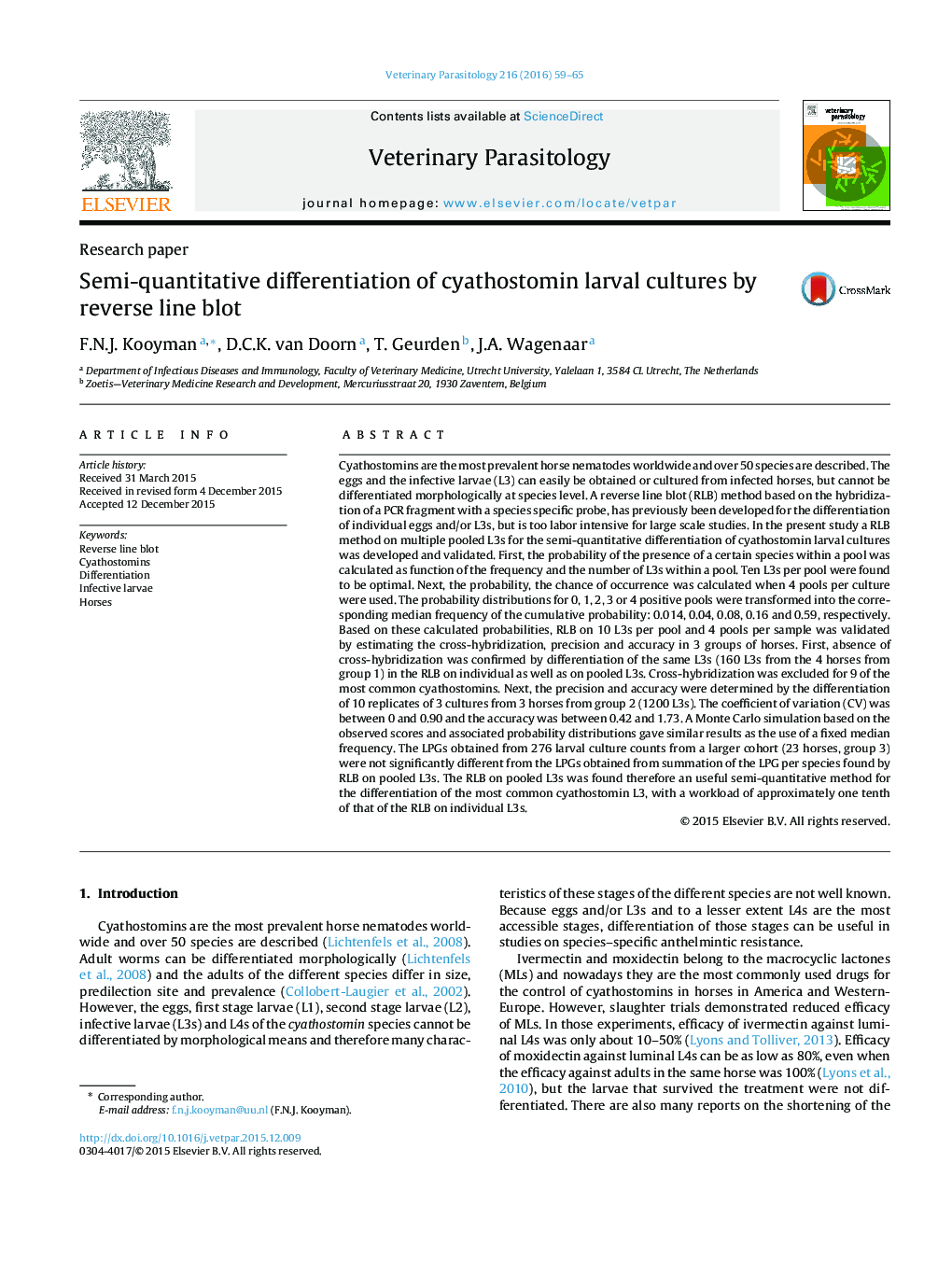| کد مقاله | کد نشریه | سال انتشار | مقاله انگلیسی | نسخه تمام متن |
|---|---|---|---|---|
| 2469958 | 1555660 | 2016 | 7 صفحه PDF | دانلود رایگان |
• RLB on pooled L3s enabled semi-quantitative differentiation of L3 cultures.
• RLB on pooled or individual L3 resulted in similar species composition of L3s culture.
• RLB on pooled L3s enabled the determination of the LPG per cyathostomin species.
• Summation of the LPG per cyathostomin species equalled the LPG from larval counts.
Cyathostomins are the most prevalent horse nematodes worldwide and over 50 species are described. The eggs and the infective larvae (L3) can easily be obtained or cultured from infected horses, but cannot be differentiated morphologically at species level. A reverse line blot (RLB) method based on the hybridization of a PCR fragment with a species specific probe, has previously been developed for the differentiation of individual eggs and/or L3s, but is too labor intensive for large scale studies. In the present study a RLB method on multiple pooled L3s for the semi-quantitative differentiation of cyathostomin larval cultures was developed and validated. First, the probability of the presence of a certain species within a pool was calculated as function of the frequency and the number of L3s within a pool. Ten L3s per pool were found to be optimal. Next, the probability, the chance of occurrence was calculated when 4 pools per culture were used. The probability distributions for 0, 1, 2, 3 or 4 positive pools were transformed into the corresponding median frequency of the cumulative probability: 0.014, 0.04, 0.08, 0.16 and 0.59, respectively. Based on these calculated probabilities, RLB on 10 L3s per pool and 4 pools per sample was validated by estimating the cross-hybridization, precision and accuracy in 3 groups of horses. First, absence of cross-hybridization was confirmed by differentiation of the same L3s (160 L3s from the 4 horses from group 1) in the RLB on individual as well as on pooled L3s. Cross-hybridization was excluded for 9 of the most common cyathostomins. Next, the precision and accuracy were determined by the differentiation of 10 replicates of 3 cultures from 3 horses from group 2 (1200 L3s). The coefficient of variation (CV) was between 0 and 0.90 and the accuracy was between 0.42 and 1.73. A Monte Carlo simulation based on the observed scores and associated probability distributions gave similar results as the use of a fixed median frequency. The LPGs obtained from 276 larval culture counts from a larger cohort (23 horses, group 3) were not significantly different from the LPGs obtained from summation of the LPG per species found by RLB on pooled L3s. The RLB on pooled L3s was found therefore an useful semi-quantitative method for the differentiation of the most common cyathostomin L3, with a workload of approximately one tenth of that of the RLB on individual L3s.
Journal: Veterinary Parasitology - Volume 216, 30 January 2016, Pages 59–65
